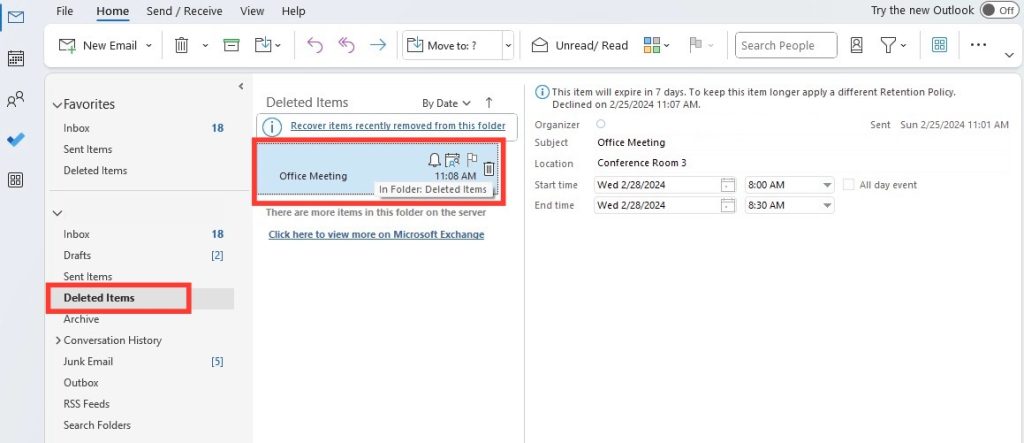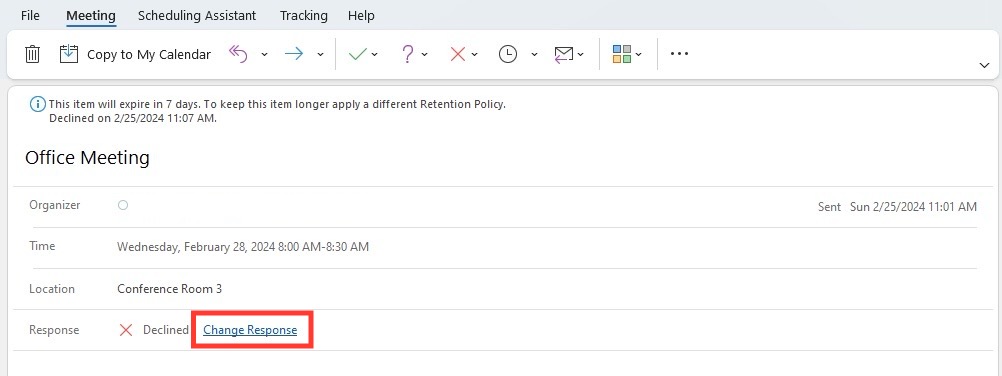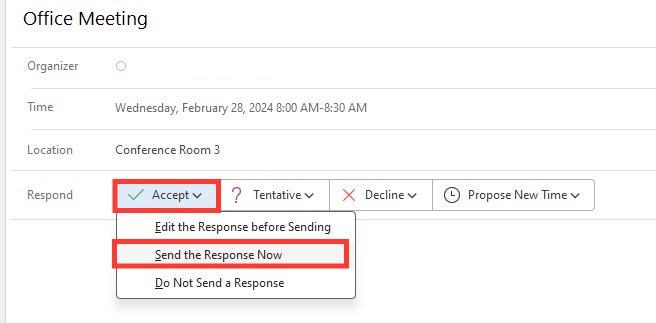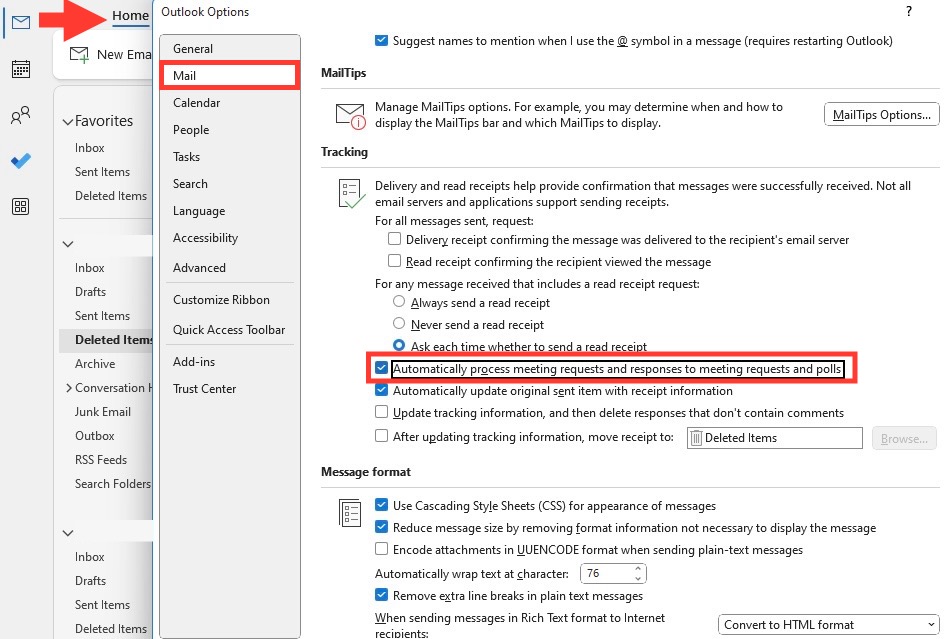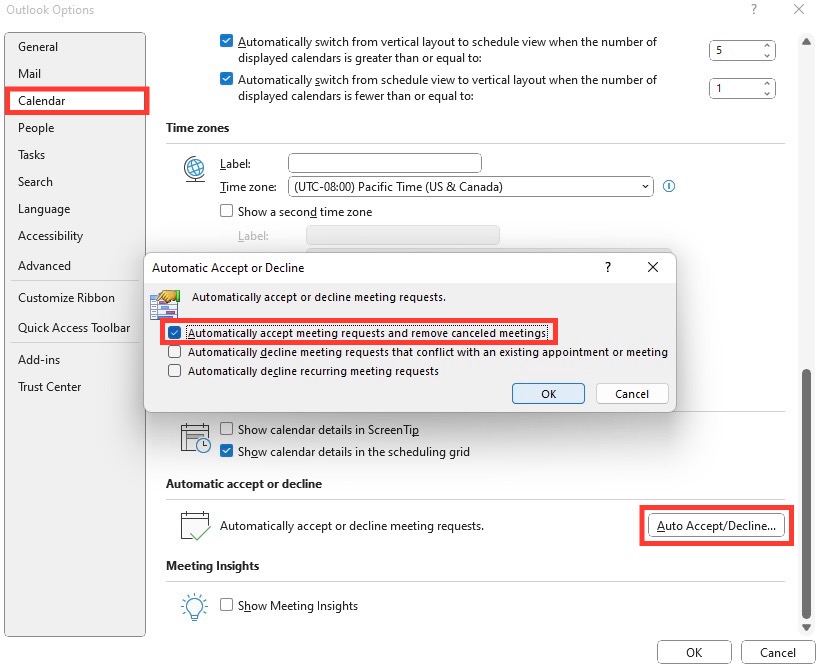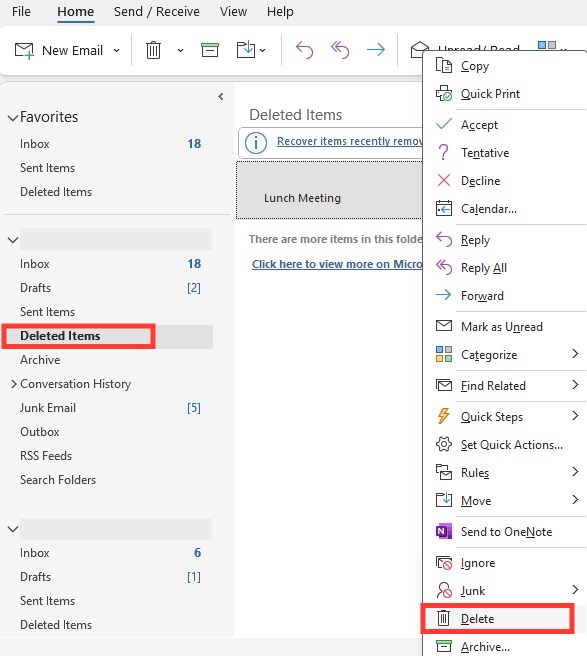Download our 141 Free Excel Templates and Spreadsheets!
Key Takeaways
- To undecline Outlook meetings, navigate to the Deleted Items folder, find the declined invitation, and open it. Choose “Accept” from the options provided, and the meeting will be added to your calendar.
- To ensure proper communication, always inform the organizer directly after undeclining a meeting in Outlook. This can be done through a brief email or by adding a note when you accept the invitation, to alert them of your change in availability.
- After undeclining a meeting in Outlook, it’s crucial to verify the meeting time and your calendar for any potential conflicts. Outlook provides features to view your calendar alongside the meeting request, making it easier to manage and organize your schedule efficiently.
Quick Solutions for Busy Schedules
In the face of busy schedules and continuous influx of meeting requests, quick and intuitive solutions become a lifeline. Understanding the operational shortcuts and features that Microsoft Outlook offers can transform the way professionals manage their time and communications. This is particularly relevant for those who need to undo an accidental decline of a meeting invitation—a matter often more urgent than it seems, given that it can affect team coordination and project timelines.
Table of Contents
Step-by-Step Guide to Undo a Decline Action
Locate the Declined Meeting Invite
Tracking down a declined meeting invite in Outlook requires a bit of navigation, but can be done swiftly with the following steps:
STEP 1: Open your Outlook calendar.
STEP 2: Review your calendar for the specific day the declined meeting was scheduled. If your calendar view does not show declined events, change your settings under the View tab to display declined meetings.
STEP 3: Alternatively, you can check the “Deleted Items” folder, as Outlook sends declined meeting invites here.
STEP 4: Look for the invite corresponding to the meeting you accidentally declined. It may help to sort your Deleted Items by date to quickly locate the invitation.
Remember, staying organized with your invites, whether accepted, tentatively accepted, or declined, can significantly streamline the process when you need to retrieve them.
Reversing Your RSVP with Simple Clicks
Once you have located the declined meeting invite, you can easily reverse your RSVP with a few simple steps:
STEP 1: Open the declined meeting invite either from your calendar or the Deleted Items folder.
STEP 2: After opening the invite, you will see options to “Accept,” “Tentative,” or “Decline” again.
STEP 3: To reverse your decline, simply click “Accept” or “Tentative,” depending on your certainty about attending the meeting.
STEP 4: If you click “Accept,” you can often add a response before sending it. This is a good opportunity to apologize for any confusion or explain the change in RSVP if necessary.
In Outlook for Android, iPhone, and iPad, if the invitation is in the Deleted folder, you can press “RSVP,” then tap “Accept” to send your updated response.
By following these steps, you can correct your response and update the meeting organizer and other attendees of your new attendance status.
Pro Tips to Manage Future Meeting Invites More Effectively
Setting Up Notifications for Meeting Responses
To avoid missing out on critical updates about your meetings, setting up notifications for meeting responses in Outlook is key. Here’s how you can ensure that you’re informed every time someone responds to your invites:
STEP 1: Launch Outlook, go to File, and go to Options.
STEP 2: In the Mail category, navigate to Tracking.
STEP 3: Ensure that the “Process requests and responses on arrival” option is checked.
STEP 4: Additionally, you can enable the “Process receipts on arrival” to manage read receipts effectively.
Now, when someone responds to your meeting invite, you’ll receive a notification in your inbox. This can help you stay on top of RSVPs and more accurately gauge attendee numbers, making it easier to manage and make necessary adjustments to your meetings.
It is also handy to remember that Outlook automatically sends a notification for each response as default, but this feature can be customized to better suit individual needs.
Utilizing Calendar Views to Track Meeting Activities
Outlook’s flexibility in calendar views is a significant advantage in overseeing meeting activities. Here’s how to maximize this functionality:
STEP 1: Start by opening your Outlook Calendar.
STEP 2: Explore different views by selecting “Day,” “Work Week,” “Week,” “Month,” or “Schedule” under the “Home” tab.
STEP 3: Customize your view by selecting “View Settings” from the “View” tab. Here you can define filters, sort your meetings, and even highlight appointments with certain responses.
By taking full advantage of Outlook’s versatile views, you can ensure that meetings, whether accepted, tentative, or declined, are visually arranged in a way that complements your workflow. Quick scanning your schedule becomes possible, aiding in productive time management and preventing oversights in meeting tracking.
Understanding Outlook’s Meeting Response Options
Tailoring Your Calendar to Suit Your Workflow
Customizing Outlook’s calendar to fit personal and business workflows is essential for efficiency. Here’s how to tailor your calendar:
- Define Start and End Times: Go to your Calendar options and set your work hours. This ensures that meeting invites outside these hours are shown as outside your work time.
- Color Categories: Use color categories to prioritize and organize different types of meetings—e.g., blue for client meetings and red for team huddles.
- Create and Manage Multiple Calendars: Separate calendars for different aspects of your life, like work, personal, or specific projects, can aid in managing varied responsibilities.
- Use Rules for Meeting Invites: Set up rules to automatically move certain invites or responses to designated folders.
By personalizing your calendar’s look and functionality, you’re able to streamline your day-to-day activities, keeping focused on what’s essential at any given time.
Why Immediate Response isn’t Always Necessary
In Outlook, rushing to respond to a meeting invite isn’t always necessary and can sometimes be counterproductive. Here are a few reasons why:
- Adequate Time for Consideration: Giving yourself time to consider your availability and the meeting’s relevance can ensure you make a commitment you can keep.
- Avoid Overcommitting: Immediate responses can lead to a cluttered calendar and potential double-bookings. It’s better to reply once you’ve reviewed your commitments.
- Information Gathering: You might need more information about the meeting’s agenda or attendees to decide if your presence is essential.
- Prioritization: Sometimes, you may need to prioritize your tasks and manage your time before committing to a new appointment.
By taking a moment before responding, you can avoid the inconvenience of having to undo an RSVP, ensuring that your calendar reflects a well-considered schedule.
Tentatively Accepting a Meeting
Tentatively accepting a meeting can be a helpful strategy to manage your time while still keeping your options open. Here’s why it’s a useful feature in Outlook:
- Flexibility: By tentatively accepting, you signal to the organizer that you are interested in the meeting but not yet fully committed. This can allow you to gauge the meeting’s importance over time and make a final decision later.
- Hold the Spot: A tentative acceptance holds a spot on your calendar, preventing other commitments from being scheduled at the same time until your decision is finalized.
- Communication: It provides an opportunity to communicate with the organizer. You might need more information about the meeting’s purpose or wish to clarify your own role in it before confirming.
- Automatic Reminder: Outlook will still remind you about a tentatively accepted meeting, ensuring it stays on your radar as you finalize your plans.
Taking advantage of the tentative option can thus serve as a practical way to manage uncertainties in your schedule without committing prematurely.
Sending Responses with or without Comments
Outlook provides flexibility in how you communicate with meeting organizers. You have the option to send responses with or without comments:
- With Comments: If you choose to “Edit the Response before Sending,” you can include a message to the organizer. This could be an explanation, a condition of your attendance, or simply a courteous note.
- Without Comments: You might opt to send a response without additional comments for routine meetings where no clarification is needed, or where your attendance status is clear.
To send a response with or without comments:
STEP 1: Click on the meeting invite in your Calendar or Inbox.
STEP 2: Select the appropriate response: “Accept,” “Tentative,” or “Decline.”
STEP 3: Choose “Send the Response Now” if you’re not adding any comments, which sends your RSVP immediately to the organizer.
STEP 4: If you need to add a note, select “Edit the Response before Sending.” Add your comments in the text box and then send.
By tailoring your RSVP, you maintain effective communication and ensure your responses are in line with the professional etiquette expected in collaborative work environments.
FAQ
Can You Recover a Meeting After Accidentally Declining It?
Yes, it is possible to recover a meeting after accidentally declining it in Outlook. Here’s what you need to know:
- Recover from Deleted Items: The declined meeting invitation initially moves to the Deleted Items folder. You can retrieve it from there as long as the folder hasn’t been emptied.
- Recover Deleted Items: If you’ve emptied the Deleted Items folder, you might still be able to recover the invite. Outlook has a feature that lets you recover items recently removed from the Deleted Items folder.
- Contact the Organizer: If you’re unable to recover the invitation on your own, reach out to the meeting organizer and explain the situation. They can resend the invite, allowing you to respond with the correct intention.
It’s important to act promptly if you’ve accidentally declined a meeting, as the ability to recover it depends on the retention settings of your Outlook Deleted Items folder.
What Should I Do If I Can’t Find the Declined Meeting Invitation?
If a declined meeting invitation is missing and you can’t find it in your Deleted Items folder, follow these steps:
- Check Other Folders: Make sure the invitation wasn’t mistakenly moved to a different folder.
- Recover Deleted Items: Use the “Recover Deleted Items” feature under the Folder tab if your organization has this option enabled.
- Search Function: Use Outlook’s search function to look for the invite across all mailboxes, in case it was misfiled.
- Check with Colleagues: If it was a group meeting, someone else might be able to provide the details or forward you the invitation.
- Contact the Organizer: As a last resort, reach out to the meeting organizer and ask them to resend the invitation to you.
It’s advisable to proceed with a systematized approach to ensure all possible avenues for recovery are explored before seeking external assistance. Remember to communicate clearly and promptly with the organizer to minimize any disruption.
How do I change the automatic accept or decline of meeting requests in Outlook?
To change the settings for automatic acceptance or declination of meeting requests in Outlook, follow these steps:
STEP 1: Open Outlook: Launch your Outlook application.
STEP 2: Access Calendar Options: Click on ‘File’, then ‘Options’, and navigate to the ‘Calendar’ section.
STEP 3: Locate Automatic Accept/Decline: Scroll to find the ‘Automatic accept or decline’ section.
STEP 4: Choose AutoProcessing Options: Click on the ‘Auto Accept/Decline’ button.
STEP 5: Configure Settings: Here, you can adjust the settings for automatic acceptance or declination. You can choose to disable automatic processing, automatically accept and decline invitations, or automatically decline conflicting appointment requests.
STEP 6: Save Changes: After making your selections, click ‘OK’ or ‘Save’ to apply your changes.
Remember that changing these settings can significantly affect how meeting requests are handled in your absence, so opt for the configuration that best supports your workflow and communication needs.
How do I delete a declined meeting in outlook?
To delete a declined meeting in Outlook, follow these steps which ensure both effective calendar management and the courtesy of properly notifying others if necessary:
STEP 1: Open Outlook Calendar: Navigate to the Calendar section of Outlook.
STEP 2: Select the Declined Meeting: Go to the date of the meeting, if it’s still showing on your calendar or open the Deleted Items folder where declined meetings are stored.
STEP 3: Edit and Delete: Click on the declined meeting to highlight it, then choose “Edit” and select “Delete” to remove it from your calendar or from the Deleted Items folder.
STEP 4: Verify Deletion: A prompt may appear to confirm the deletion. Confirm to proceed.
STEP 5: Notify the Organizer if Needed: If the meeting still shows in your calendar because you’ve initially declined it without sending a response back, you might want to inform the organizer that you will not attend and then delete the meeting.
By deleting the declined meeting, you keep your calendar organized and free from outdated and irrelevant entries, ensuring clarity in your schedule.
John Michaloudis is a former accountant and finance analyst at General Electric, a Microsoft MVP since 2020, an Amazon #1 bestselling author of 4 Microsoft Excel books and teacher of Microsoft Excel & Office over at his flagship MyExcelOnline Academy Online Course.

